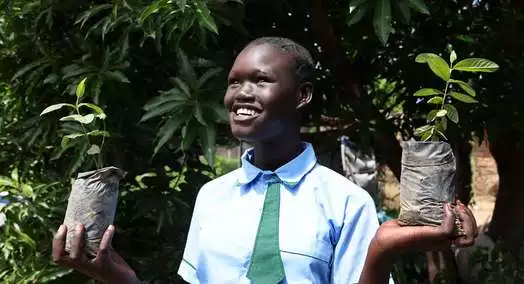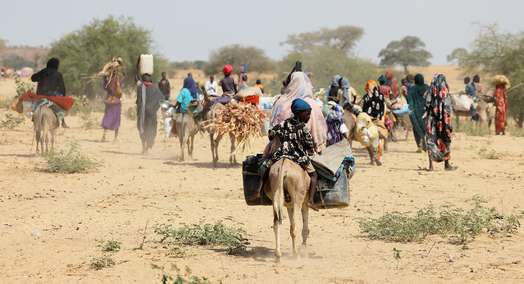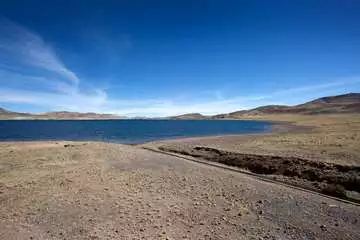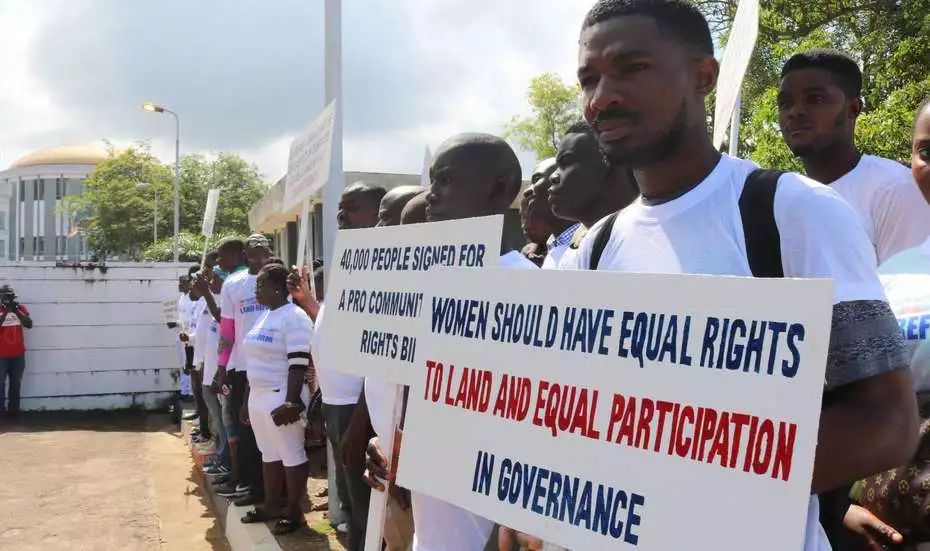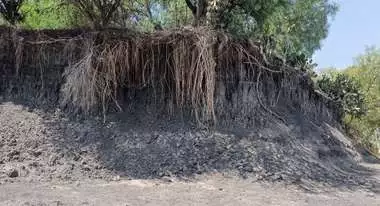More and more land in fewer hands
Land speculation only benefits a select few. Their wealth comes at the expense of the small actors in food systems.

Inequality is increasing worldwide. This also applies to land access. This is a central finding of the study "Uneven Ground" by the International Land Coalition (ILC), of which Welthungerhilfe is a member. In most countries, land ownership is concentrated in fewer and fewer hands, and their landholdings are becoming larger and larger. This is to the detriment of those who depend on agriculture and other uses of the land for their survival. This applies especially to smallholder farmers and women, as well as to indigenous peoples and rural communities more generally.
The researchers evaluated land inequality using census data, along with data concerning tenure, land quality and other indicators in 17 countries in Asia, Africa and Latin America. According to the results, the concentration of land ownership has increased in almost all regions worldwide since 1980. Due to this trend, the livelihoods of 2.5 billion people who depend on agriculture are now under threat.
The concentration of land ownership threatens the livelihoods of 2.5 billion people.
"Uneven Ground" studyAccording to estimates, there are about 608 million farms worldwide today. Most of these are still family farms. However, the disparity is shocking: only 1% of farms operate on more than 70% of the world's farmland. These are large industrial farms that supply food to the global market. However, about half of the world's available food is still produced by smallholder farmers.
About 80% of all farms, about 486 million farms, are smallholdings of less than two hectares. There are also big disparities within the rural population when looking at land values. The wealthiest 10% of the population capture 60% of agricultural land value, while the poorest 50% capture only 3%. This means that the most fertile land is also in fewer hands. Half the rural population is struggling to survive with poor soil and little water.
Inequality remains highest in Latin America. In Asian and African countries, it is less pronounced according to simple calculations based on household surveys of ownership and size of holdings. However, a significantly larger "gap" is found when data on land quality (i.e., fertility, water availability) and the number of landless people are included in the analysis. According to conventional methods, the distribution of land in India, for example, is relatively equal. However, if data on land value and landless people are added, it is among the countries with the highest levels of inequality.
Inequality is also one of the structural causes of the continuing peasant protests in India. Forty farmers' unions have now mobilised more than half a million farmers and farm workers. These are the largest protests against the policies of Prime Minister Narendra Modi since he took office in 2014. The social movement "Ekta Parishad", a partner organisation of Welthungerhilfe, has been fighting for the rights of landless people since the 1990s in projects such as dam construction, raw material extraction, large-scale plantations for the production of bioenergy or even national parks and nature reserves that take land away from or block access to indigenous peoples (Adivasi) and small farmers (Dalit).
Systemic causes of hunger
Without resources, however, people cannot break free from poverty and hunger on their own. Unequal access to land should therefore be included as a systemic factor in the debate on food systems – both globally and nationally – and in the analysis of the causes of hunger and poverty. Furthermore, the analysis, conclusions and recommendations for solutions from the ILC's Land and Inequality report should be included in the outcome documents of the UN Food Systems Summit.
For this, the driving forces behind this global trend need to be looked at. What are they? The answer is not simple as researchers must deal with a lack of transparency. The most comprehensive database on large-scale land-based agricultural investments worldwide is the Land Matrix, a monitoring initiative from five partners, including the Hamburg-based German Institute for Global and Area Studies.
The Land Matrix records 1,487 land deals covering an area of more than 30 million hectares. The investor is known for fewer than 20% of these deals. The location of the investment is known for only 15%. Fewer than 10% of investors publish the purchase price or the lease amount. Investors from EU countries are not only among the most significant investors worldwide, but they are also among the least transparent.
Most alarming for Welthungerhilfe and the people it works with, however, is the fact that in 90 percent of all cases there is no record of whether the affected communities were asked beforehand if oil palm or sugar cane should be grown on their land for export.
Who owns the land?
The central question is: Who owns the land? The Rights and Resources Initiative has investigated this question in a comprehensive study. It is generally overlooked that in most parts of the world, ownership is not formally recorded in the "western" sense of the word, as for example in Germany, where there is a land register for house owners and farmers.
Community-owned property can be a better option if it is managed democratically and transparently. Nobel laureate Elinor Ostrom has addressed the alleged "tragedy of the commons" and described how complex social structures and processes develop to manage communal land sustainably in the interest of all users.
According to the Rights and Resources study, only 10% of the world's land is formally registered as owned by indigenous peoples and local communities, and 8% is designated for them. By contrast, it is estimated that up to 65% of the world's land is administered under customary law; approximately 1.5 billion people live on this land.
Programmed conflicts
The lack of careful analysis and recording of land rights is a major cause of conflict and failed investments. Conversely, international cooperation and responsible investors are increasingly realising that cooperation with members of indigenous peoples and local communities is of central importance to making development sustainable, fighting hunger and poverty, protecting soils, forests, biodiversity and thus also the climate.
Furthermore, debate about inequality, driven by organisations such as Oxfam, will increase due to the negative economic consequences of the COVID-19 pandemic. The "Uneven Ground" report is essential to this debate. Is it acceptable that the US financial firm BlackRock, the world’s global asset manager, has assets of US $7.43 trillion, which amounts to almost twice Germany's 2019 gross domestic product of US $4 trillion?
Investor interest, especially non-agricultural financial investors, in the increasingly scarce resource of fertile land is unabated. Opaque and intricate global interconnections make the system increasingly inscrutable; and for the affected population it is becoming more and more difficult to figure out who they can turn to in case of human rights violations. These people cannot count on their government or the legal system in authoritarian and corrupt regimes.
Solution approaches are voluntary
Complex challenges require complex solutions with staying power. A key instrument for addressing land rights issues is the Committee on World Food Security's Voluntary Guidelines on the Responsible Governance of Tenure of Land. This international legal instrument describes the issue of legitimate land rights and recommends solutions. However, this will only be effective in the long term if states incorporate these voluntary guidelines into national laws and create the necessary institutions and administrative procedures.
Welthungerhilfe has had positive experiences with this in its "Land for Life" programme, for example in Liberia and Sierra Leone. For this to work, everyone has to pull together: Donor agencies such as USAID, international organisations such as FAO, as well as civil society actors. In Liberia, the Land Rights Act has been passed. Now a major land conference is being prepared to implement it. In Sierra Leone, the Customary Land Rights Bill is in the consultation phase.
The second major field of action is the human rights due diligence obligations of companies. The previous gap was called "extraterritorial state obligations". If human rights violations in countries are not punished, but they are related to foreign investments, governments in the countries where the investors are based must force companies to respect human rights along their entire supply chain and to take remedial action in the event of human rights violations. This requires regulations at the national (Supply Chain Act), EU (due diligence legislation) and global (Binding Treaty on Business and Human Rights) levels.
Transparent investments
Thirdly, there is a need for transparency and monitoring in the sale and ownership of land. Not every deal is in the public's best interest. Even in Germany, there are now discussions about stronger regulation of the rural property market to preserve broad distribution of ownership and ensure a future for family farms. The same applies to transparency in transnational agricultural investments. Project-related information should be available on public databases. This is especially true if the investment is supported with public funds, for example through development banks.
Fourth, redistribution should not be taboo. Extreme inequalities must be reduced through fair tax policies, social policies and land reforms. The COVID-19 pandemic has thrown a spotlight on how quickly people can fall into hardship. Land belongs to all of us, so land should not be an object of speculation or help a select few become even richer.

